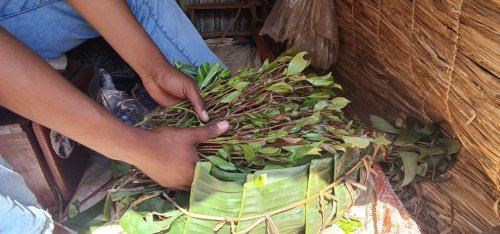
The "The role of Khat (Catha edulis) in spreading antimicrobial-resistant Bacteria: A quantitative risk assessment from Farm to end-users using a one health approach" is one of the chosen One Health Network Funds 2021/2022 projects, led by Ahmed Zeynudin Kasim.
Khat (Catha edulis) is an evergreen leafy plant chewed daily by 20 million people worldwide as a mild, amphetamine-like psycho-stimulant drug, with Ethiopia being its largest producer and exporter globally, accounting for 13.4% of the export earnings of the country. Preferred by farmers as cash crops, it is harvested 2-3 times throughout the year, with lands being used for Khat production increasing by 160%, and the practice rapidly expanding to new regions in Ethiopia. Socio-culturally, Khat chewing has also been a deep-rooted, lawful traditional practice for generations and particularly prominent in the eastern and southwest parts of the country, including the Jimma town.

Khat, like any other fruits and vegetables, has the potential for carrying and disseminating antibiotic-resistant bacteria at multiple stages in the food supply chain. At the pre-harvest stage, farmers usually use manure and irrigation water, which are known to contain bacteria. During harvesting, Khat leaves and shoots are picked and trimmed with hands, sorted and wrapped up with banana leaves in unhygienic conditions. It is then delivered to the points of sale carried by humans, animals or open tracks and finally retailed at open markets and verandas. Moreover, fresh, raw Khat is consumed by end-users without prior washing it.
Previous studies have shown that Khat consumption practice was associated with unacceptable levels of microbial contamination. But, the role of Khat in spreading antimicrobial-resistant bacteria among humans, animals and the environment is currently unknown.
Project aim:
The aim of this study, therefore, is to determine the presence of antibiotic-resistant bacteria on fresh Khat and elucidate whether and to what extent Khat plays a role as a carrier and reservoir of antibiotic-resistant bacteria in humans, animals and the environment using a One Health approach.
This descriptive, cross-sectional study is to be conducted in Jimma town and five prominent Khat-producing districts, using Khat, human, animal, soil and water samples obtained from these areas. The Hazard Analysis Critical Control Points (HACCP) approach is also to be used to identify the hazards of microbiological risky pathways from Khat cultivation, processing and consumption practices.
The results of this investigation will be of paramount importance in the establishment of new guidelines and regulations for Khat processing and handling to improve its microbial safety.

